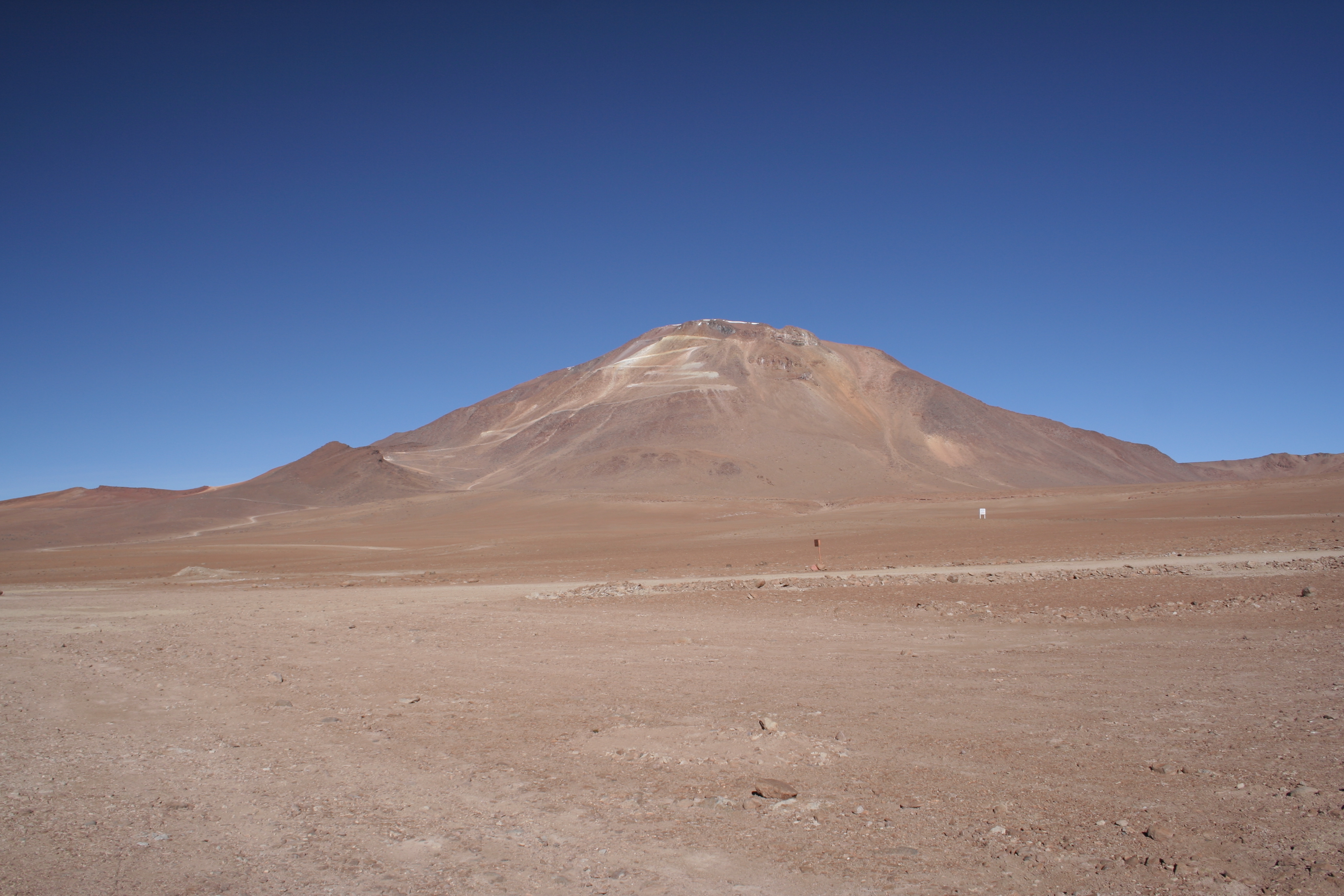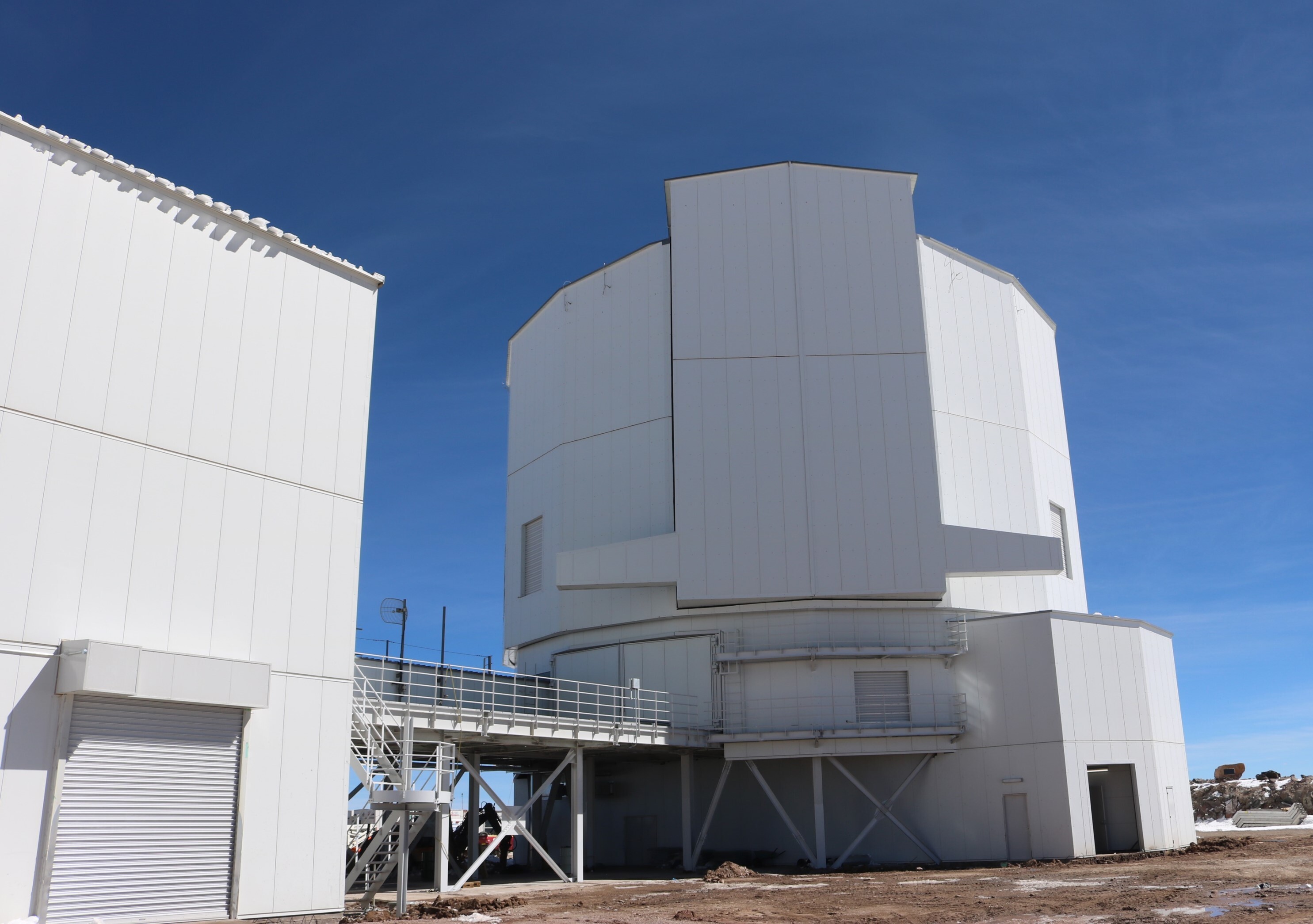1.05.2024

Cerro Chajnantor. At 5,640 meters, the summit of Cerro Chajnantor, where TAO is located, allows the telescope to be above most of the moisture that would otherwise limit its infrared sensitivity. ©2024 TAO project CC-BY-ND

TAO. The University of Tokyo Atacama Observatory (TAO) at the summit of Cerro Chajnantor. ©2024 TAO project CC-BY-ND
How do planets form? How do galaxies evolve? And ultimately, how did the universe itself begin? A unique astronomical observatory that researchers hope will unravel some of the biggest mysteries out there marks its opening on April 30, 2024.
At an altitude of 5,640 meters, the University of Tokyo Atacama Observatory (TAO), built on the summit of a desert mountain in northern Chile, is the highest astronomical observatory in the world, which should give it unrivaled capabilities, but presents some novel challenges.
Astronomers will go through ever greater lengths to get a better view of the universe. Going back hundreds of years, some of the first lenses were made for telescopes to bring the heavens closer to Earth. Since then, there have been optical telescopes with mirrors as big as buildings, radio telescopes with antenna that stretched between mountaintops, and there is even a space telescope, the James Webb Space Telescope, farther than the moon. And now, the University of Tokyo has opened another groundbreaking telescope, funded partly by the Japanese government.
TAO is finally up and running after 26 years of planning and construction. It is officially the highest observatory in the world and was awarded a Guiness World Record in recognition of that fact. Located in Chile’s Atacama Desert, it’s not far from another notable observatory frequently used by astronomers from Japanese institutions, the Atacama Large Millimeter/submillimeter Array (ALMA) radio telescope. But why does TAO have to be so high up and what benefits, and drawbacks, does that factor provide?
“I’m seeking to elucidate mysteries of the universe, such as dark energy and primordial first stars. For this, you need to view the sky in a way that only TAO makes possible,” said Emeritus Professor Yuzuru Yoshii, who has been leading the TAO project for 26 years as the principal investigator since 1998. “Of course, it contains state-of-the-art optics, sensors, electronics and mechanisms, but the uniquely high altitude of 5,640 meters is what gives TAO such clarity of vision. At that height, there’s little moisture in the atmosphere to impact its infrared sight. Construction on the summit of Cerro Chajnantor was an incredible challenge, not just technically, but politically too. I have liaised with Indigenous peoples to ensure their rights and views are considered, the Chilean government to secure permission, local universities for technical collaboration, and even the Chilean Health Ministry to make sure people can work at that altitude in a safe manner. Thanks to all involved, research I’ve only ever dreamed about can soon become a reality, and I couldn’t be happier.”
The incredible altitude of TAO makes it difficult and hazardous for humans to work there. The risk of altitude sickness is high, not only for construction work, but even for astronomers working there, especially at night when some symptoms can be worse. So, the question is, will all this effort and expense be worth it? What kinds of research will it offer the astronomical community, and by extension, human knowledge?
“Thanks to the height and arid environment, TAO will be the only ground-based telescope in the world capable of clearly viewing mid-infrared wavelengths. This area of the spectrum is extremely good for studying the environments around stars, including planet-forming regions,” said Professor Takashi Miyata, director of the Atacama Observatory of the Institute of Astronomy and manager of the observatory’s construction. “Also, as TAO is operated by the University of Tokyo, our astronomers will have unmitigated access to it over extended periods of time, which is essential for many new kinds of astronomical research that explore dynamic phenomena impossible to observe with infrequent observations from shared telescopes. I’ve been involved with TAO for over 20 years; as an astronomer, I am very excited indeed and the real work, of making observations, is about to begin.”
There are a broad range of astronomical matters TAO can contribute to, so researchers will have different uses for its uniquely privileged instruments. Some researchers are even contributing to TAO by developing instruments specific to their needs.
“Our team developed the Simultaneous-color Wide-field Infrared Multi-object Spectrograph (SWIMS), an instrument that can observe a large area of the sky and simultaneously observe two wavelengths of light. This will allow us to efficiently collect information on a diverse range of galaxies, fundamental structures that make up the universe. Analysis of the SWIMS observation data will provide insight into the formation of these including the evolution of the supermassive black holes at their centers,” said Assistant Professor Masahiro Konishi. “New telescopes and instruments naturally help advance astronomy. I hope the next generation of astronomers use TAO and other ground-based, and space-based, telescopes, to make unexpected discoveries that challenge our current understanding and explain the unexplained.”
Due to the relative availability of TAO, more young astronomers should be able to make use of it than with previous generations of telescopes. And, being a next-generation telescope, TAO can offer emerging research talent a chance to express their ideas in ways never before possible.
“I use various laboratory experiments to better understand the chemical nature of organic dust in the universe, which can help us learn more about the evolution of materials, including those that led to the creation of life. The better astronomical observations of the real thing can be, the more accurately we can reproduce what we see with our experiments on Earth. TAO can help greatly as we observe organic dust in the mid-infrared range,” said graduate student Riko Senoo. “Though in the future I will be able to use TAO remotely, I will be on location to aid in the construction of our specialized instrument, the Mid-Infrared Multi-field Imager for gaZing at the UnKnown Universe (MIMIZUKU). TAO is located in a remote region I could never visit in everyday life, so I am greatly looking forward to spending time there.”
As time goes on, no doubt current and future astronomers alike will find more and more ways to make groundbreaking observations with TAO. The team hopes the features that make it so novel — the remote operation, the highly sensitive instruments, and of course, the fact that a high-precision telescope was successfully developed to work in a low-pressure environment — will inform and inspire designers, engineers and researchers who contribute to astronomical observation facilities everywhere.
Quelle: The University of Tokyo
